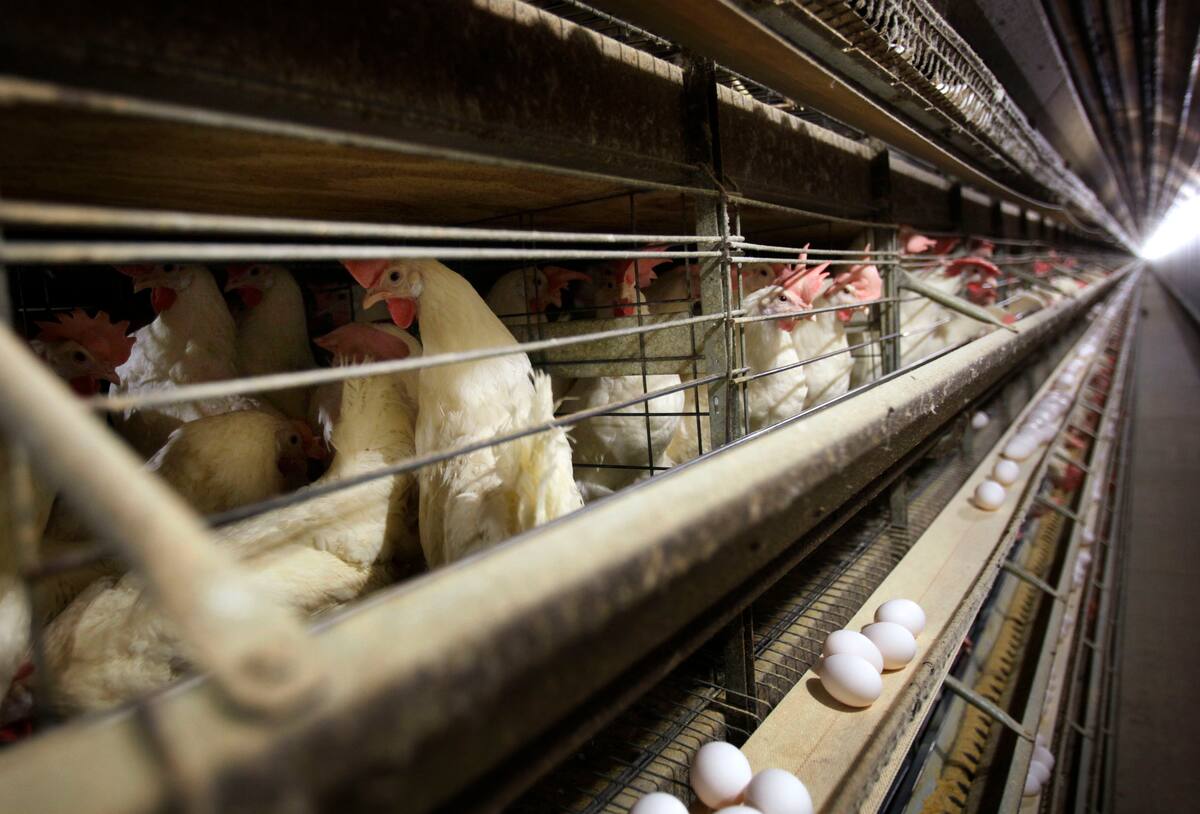WHO: Fatal H5N2 Infection In Mexico City

Credit Wikipedia
#18,103
We've a late afternoon announcement from the WHO regarding a fatal H5N2 infection (onset began in April) of a 59 year-old resident with several preexisting conditions. This is the first confirmed human infections with this subtype, although seroconversion has been observed in poultry workers (see Taiwan: Three Poultry Workers Show H5N2 Antibodies).
Unfortunately, two of the main details we'd like to see in a case like this are not provided in today's report.
But either way, this is another milestone for H5 influenza, in a year where they seem to be happening with increasing regularity.
Avian Influenza A (H5N2) - Mexico
5 June 2024
Situation at a glance
On 23 May 2024, the Mexico International Health Regulations (IHR) National Focal Point (NFP) reported to PAHO/WHO a confirmed fatal case of human infection with avian influenza A(H5N2) virus detected in a resident of the State of Mexico who was hospitalized in Mexico City.
https://afludiary.blogspot.com/2024/...xico-city.html

Credit Wikipedia
#18,103
We've a late afternoon announcement from the WHO regarding a fatal H5N2 infection (onset began in April) of a 59 year-old resident with several preexisting conditions. This is the first confirmed human infections with this subtype, although seroconversion has been observed in poultry workers (see Taiwan: Three Poultry Workers Show H5N2 Antibodies).
Unfortunately, two of the main details we'd like to see in a case like this are not provided in today's report.
- Is this an HPAI H5N2 virus, or is it LPAI? Both have been reported in Mexico recently (see last March Mexico Reports HPAI H5N2 For the 1st Time in Nearly 30 Years)
- What clade of H5 is this virus? Is it clade 2.3.4.4b, like the H5N1 viruses that have dominated recently? Or is it a different lineage?
But either way, this is another milestone for H5 influenza, in a year where they seem to be happening with increasing regularity.
Avian Influenza A (H5N2) - Mexico
5 June 2024
Situation at a glance
On 23 May 2024, the Mexico International Health Regulations (IHR) National Focal Point (NFP) reported to PAHO/WHO a confirmed fatal case of human infection with avian influenza A(H5N2) virus detected in a resident of the State of Mexico who was hospitalized in Mexico City.
This is the first laboratory-confirmed human case of infection with an influenza A(H5N2) virus reported globally and the first avian H5 virus infection in a person reported in Mexico.
Although the source of exposure to the virus in this case is currently unknown, A(H5N2) viruses have been reported in poultry in Mexico. According to the IHR (2005), a human infection caused by a novel influenza A virus subtype is an event that has the potential for high public health impact and must be notified to the WHO. Based on available information, WHO assesses the current risk to the general population posed by this virus as low.
Description of the situation
On 23 May 2024, the Mexico IHR NFP reported to PAHO/WHO a confirmed case of human infection with avian influenza A(H5N2) virus detected in a 59-year-old resident of the State of Mexico who was hospitalized in Mexico City and had no history of exposure to poultry or other animals. The case had multiple underlying medical conditions. The case’s relatives reported that the case had already been bedridden for three weeks, for other reasons, prior to the onset of acute symptoms.
On 17 April, the case developed fever, shortness of breath, diarrhoea, nausea and general malaise. On 24 April, the case sought medical attention, was hospitalized at the National Institute of Respiratory Diseases “Ismael Cosio Villegas” (INER per its acronym in Spanish) and died the same day due to complications of his condition.
Results from Real-Time Polymerase Chain Reaction (RT-PCR) of a respiratory sample collected and tested at INER on 24 April indicated a non-subtypeable influenza A virus. On 8 May, the sample was sent for sequencing to the Laboratory of Molecular Biology of Emerging Diseases Center for Research in Infectious Diseases (CIENI per its acronym in Spanish) of INER, which indicated that the sample was positive for influenza A(H5N2). On 20 May, the sample was received at the Institute of Epidemiological Diagnosis and Reference (InDRE per its acronym in Spanish) of the Mexico National Influenza Centre, for analysis by RT-PCR, obtaining a positive result for influenza A. On 22 May, sequencing of the sample confirmed the influenza subtype was A(H5N2).
No further cases were reported during the epidemiological investigation. Of the 17 contacts
Public health response
Local and national health authorities implemented the following public health measures:
PAHO/WHO implemented the following measures:
Although the source of exposure to the virus in this case is currently unknown, A(H5N2) viruses have been reported in poultry in Mexico. According to the IHR (2005), a human infection caused by a novel influenza A virus subtype is an event that has the potential for high public health impact and must be notified to the WHO. Based on available information, WHO assesses the current risk to the general population posed by this virus as low.
Description of the situation
On 23 May 2024, the Mexico IHR NFP reported to PAHO/WHO a confirmed case of human infection with avian influenza A(H5N2) virus detected in a 59-year-old resident of the State of Mexico who was hospitalized in Mexico City and had no history of exposure to poultry or other animals. The case had multiple underlying medical conditions. The case’s relatives reported that the case had already been bedridden for three weeks, for other reasons, prior to the onset of acute symptoms.
On 17 April, the case developed fever, shortness of breath, diarrhoea, nausea and general malaise. On 24 April, the case sought medical attention, was hospitalized at the National Institute of Respiratory Diseases “Ismael Cosio Villegas” (INER per its acronym in Spanish) and died the same day due to complications of his condition.
Results from Real-Time Polymerase Chain Reaction (RT-PCR) of a respiratory sample collected and tested at INER on 24 April indicated a non-subtypeable influenza A virus. On 8 May, the sample was sent for sequencing to the Laboratory of Molecular Biology of Emerging Diseases Center for Research in Infectious Diseases (CIENI per its acronym in Spanish) of INER, which indicated that the sample was positive for influenza A(H5N2). On 20 May, the sample was received at the Institute of Epidemiological Diagnosis and Reference (InDRE per its acronym in Spanish) of the Mexico National Influenza Centre, for analysis by RT-PCR, obtaining a positive result for influenza A. On 22 May, sequencing of the sample confirmed the influenza subtype was A(H5N2).
No further cases were reported during the epidemiological investigation. Of the 17 contacts
Public health response
Local and national health authorities implemented the following public health measures:
- Epidemiological investigation of case and contacts.
- Monitoring of health care workers with a history of contact with the patient.
- Monitoring and surveillance of influenza-like respiratory illness (ILI) and severe acute respiratory illness (SARI) in neighbouring municipalities (within the same health region), in order to analyze the behaviour and trends of respiratory syndromes and viruses in the region.
- Analysis of the trends of pneumonia and bronchopneumonia, acute respiratory infections, and conjunctivitis by the health services of Mexico City and the State of Mexico.
- Identification of transmission chains and risk factors in the municipality where the case resided, the State of Mexico and surrounding areas.
- Training on the National Guide for preparedness, prevention and response to an outbreak or zoonotic influenza event at the animal-human interface.
- Communicated with animal and environmental health authorities to strengthen surveillance activities in poultry and wild birds near the case's residence and areas with a history of low pathogenic avian influenza A(H5N2) outbreaks.
PAHO/WHO implemented the following measures:
- Strengthening routine and event surveillance on the human-animal interface with WHO Collaborating Centers and strategic partners.
- Improvement of molecular diagnostic capacity for detection of zoonotic diseases through knowledge transfer, training and technical support with recent emphasis in avian influenza A(H5N1)
- Strengthening national capacity for the prompt shipment of human and animal samples to WHO collaborating centers for additional characterization and/or vaccine composition analysis.
- Regular risk assessment for transmissibility and severity for zoonotic viruses.
- Update of guidelines on influenza surveillance and response at the human-animal interface.
- Revision of experiences in response and lessons learned from countries that experienced zoonotic influenza outbreaks.
- Technical strengthening of risk communication capacities for events at the human-animal interface.
- Clinical management training on zoonotic influenza treatment, infection prevention and control (IPC), and reorganization of health services.
- Animal carcass handling training, including IPC technical aspects.
- PAHO published recommendation
WHO risk assessment
This is the first laboratory-confirmed human case of infection with an influenza A(H5N2) virus reported globally, and the first A(H5) virus infection in a person reported in Mexico. The case had multiple underlying conditions, and the investigation by the health authorities in Mexico is ongoing to determine the likely source of exposure to the virus. Influenza A(H5N2) viruses have been detected in poultry in Mexico recently.
Whenever avian influenza viruses are circulating in poultry, there is a risk for infection and small clusters of human cases due to exposure to infected poultry or contaminated environments. Therefore, sporadic human cases are not unexpected. Human cases of infection with other H5 subtypes including A(H5N1), A(H5N6) and A(H5N8) viruses have been reported previously. Available epidemiological and virological evidence suggests that A(H5) viruses from previous events have not acquired the ability to sustain transmission between humans, thus the current likelihood of sustained human-to-human spread is low. According to the information available thus far, no further human cases of infection with A(H5N2) associated with this case have been detected.
There are no specific vaccines for preventing influenza A(H5) virus infection in humans. Candidate vaccines to prevent A(H5) infection in humans have been developed for pandemic preparedness purposes. Close analysis of the epidemiological situation, further characterization of the most recent viruses (in human and birds) and serological investigations are critical to assess associated risks and to adjust risk management measures in a timely manner.
Based on the available information, WHO assesses the current risk to the general population posed by this virus to be low. If needed, the risk assessment will be reviewed should further epidemiological or virological information, including information on A(H5N2) viruses detected in local animal populations, become available.
This is the first laboratory-confirmed human case of infection with an influenza A(H5N2) virus reported globally, and the first A(H5) virus infection in a person reported in Mexico. The case had multiple underlying conditions, and the investigation by the health authorities in Mexico is ongoing to determine the likely source of exposure to the virus. Influenza A(H5N2) viruses have been detected in poultry in Mexico recently.
Whenever avian influenza viruses are circulating in poultry, there is a risk for infection and small clusters of human cases due to exposure to infected poultry or contaminated environments. Therefore, sporadic human cases are not unexpected. Human cases of infection with other H5 subtypes including A(H5N1), A(H5N6) and A(H5N8) viruses have been reported previously. Available epidemiological and virological evidence suggests that A(H5) viruses from previous events have not acquired the ability to sustain transmission between humans, thus the current likelihood of sustained human-to-human spread is low. According to the information available thus far, no further human cases of infection with A(H5N2) associated with this case have been detected.
There are no specific vaccines for preventing influenza A(H5) virus infection in humans. Candidate vaccines to prevent A(H5) infection in humans have been developed for pandemic preparedness purposes. Close analysis of the epidemiological situation, further characterization of the most recent viruses (in human and birds) and serological investigations are critical to assess associated risks and to adjust risk management measures in a timely manner.
Based on the available information, WHO assesses the current risk to the general population posed by this virus to be low. If needed, the risk assessment will be reviewed should further epidemiological or virological information, including information on A(H5N2) viruses detected in local animal populations, become available.
https://afludiary.blogspot.com/2024/...xico-city.html









Comment